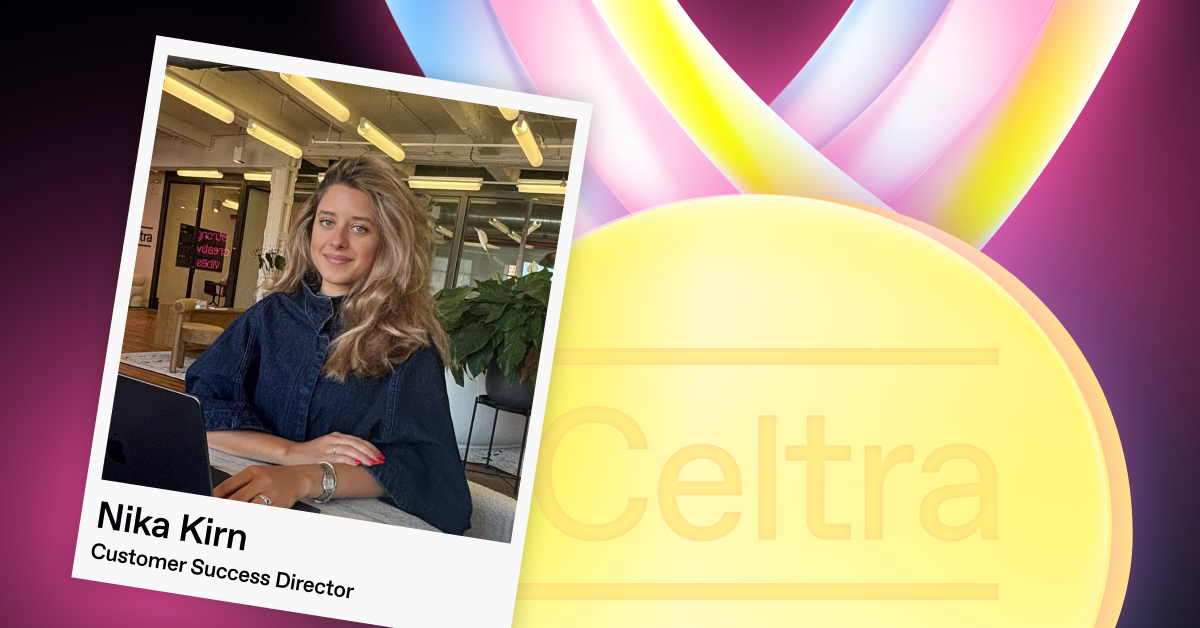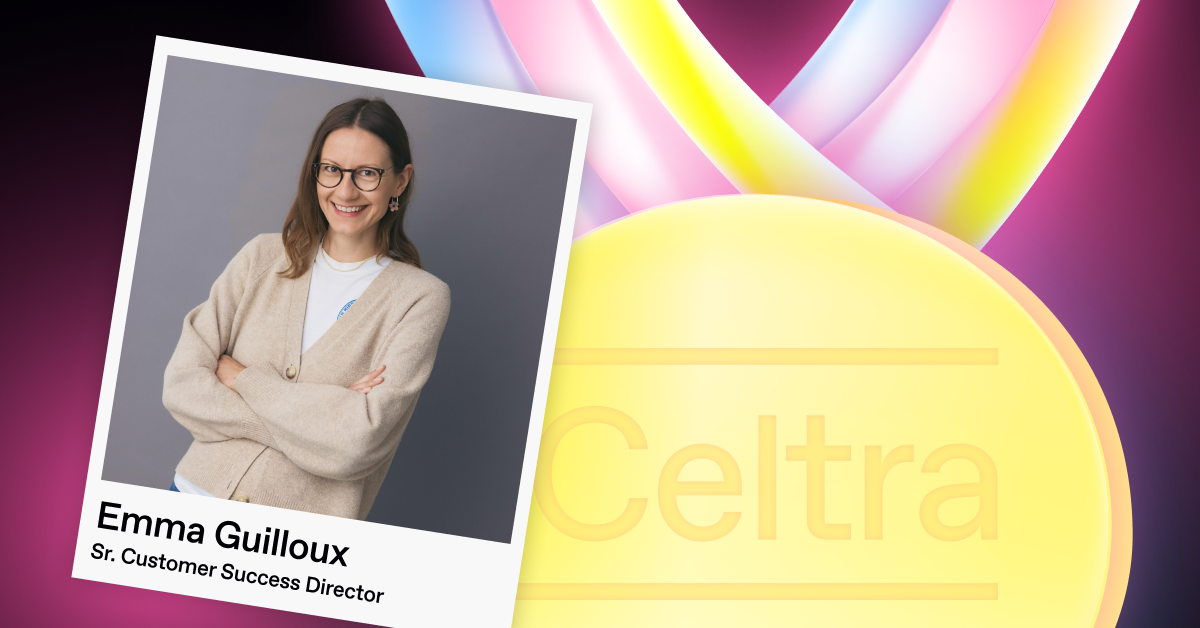A word with Customer Success Directors Tessa Daugherty & Frankie Morgan
As a workforce, we have undergone an incredible amount of change in the last few years, notably in the client-facing space, where meetings that would typically take place in a boardroom are now held virtually, with attendees logging in from a range of area codes.
We know from parts one & two of this three-part series that hybrid working has allowed businesses like Celtra to not only access talent from all over the globe, but allow their workforce the freedom to balance a healthy working lifestyle. With the help of strong leadership, Celtra encourages camaraderie and in-person get-togethers while also providing flexibility with its remote-first working model. However, with all that being said, we also need to establish whether or not this model has worked as well for our client-facing colleagues, who have had to navigate this change with people outside the company, who aren’t necessarily in the same boat.
So who can we ask? Meet our Customer Success Directors; Tessa Daugherty from the London office and Frankie Morgan from the New York office. As well-seasoned leaders from our CS team, their insights on how to drive momentum in the hybrid work era proved highly valuable. In the words of Frankie Morgan, “Customer Success is ever evolving and I think it’s important as ever for us to share knowledge & best practices along the way”.

How has communication with clients evolved, if at all, in the remote-first switch?
TD: Client relationship management has adapted well to video calls, but it seems as if this was already the case. In most instances, they were dispersed across different locations and, therefore, already used to them. However, now it seems more necessary to push for in-person meetings due to how easily it is to divert to video.
FM: Being a global organization, we have clients in different parts of the world & time zones, so the remote approach to communication has always been a part of our relationship with customers. Many of our clients are also working remotely or in a hybrid model so video calls & emails tend to be the preferred methods of communication as it allows us to collaborate with more agility and at times most appropriate for both parties. Gone are the days wasted commuting to meetings or flying overseas for every meeting.

How are you fostering client relationships in a remote-first environment?
TD: It’s important to generate some small talk and get to know people in this forum, however hard, but I feel (now that we are at the point of being able to do so) it is more important than ever to push to meet in person when you can. Nothing beats discussions had in person to make and sustain good lasting impressions.
Typically, we invite clients for lunch, and office meetings are picking up again. We used to do more parties and dinner/drinks, but people often prefer to do something during the working day rather than after hours these days. I’d like to push for more face-to-face communication and conversations, as they make a huge difference in working relationships.
FM: All relationships take work, including the professional ones. While remote engagements are great for driving productivity, you cannot underestimate the value of human interaction. We try to organize in-person meetings early in the partnership with things like kick-off meetings, onboarding, etc., that are a great way to build initial trust. If we’re in the same continent/city, lunches are always a good idea as they create a relaxed atmosphere to have conversations unrelated to work that further build on the relationship. If we cannot meet in person we always ensure meetings are time zone appropriate for the client and make time for small talk.

What are the most significant challenges that you’ve acknowledged post-shift to hybrid working?
TD: The thing I miss the most about being in the office is colleague interaction, and the ability to discuss things on the fly/as they come in. In order to combat this remotely, I always need to hop on video calls, which admittedly comes with a huge level of fatigue. With that being said, remote work offers flexibility in doing personal things within your own time frame, like going to the gym at 10 am vs. 5 am before 9 am starts in the office, or doing laundry as it comes rather than spending your weekend sorting it all out.
FM: Interactions with coworkers tend to be strictly business-related as we mainly communicate over video calls and try to be as efficient as possible. I miss the office banter lunch debates and spontaneous post-work drinks and social events. Knowledge sharing from a personal or professional point of view is limited, so we have to find ways to stay on top of everything, which can be stressful in such a dynamic environment. I used to love my walks into the office every day- I was lucky enough to have a 45-minute commute door to door, which was the perfect way to start the day… Often zoning out listening to a podcast and getting ‘my steps in’ along the way!

How have you had to adapt your role as a result of the hybrid work switch?
TD: Personally, I’ve had to significantly increase the amount of video calls, which, in turn, has meant I’ve needed to actively allocate time for ‘focus work’ which is more than difficult most weeks. Since CS is client-facing, there are, of course, always internal meetings and alignments that come with that. Sometimes it feels like there is no down-time or time to do anything other than discussing the next move.
FM: Being a parent the remote-first approach has allowed me to organize my day in a way that fits both family and business needs. I can be more present at home, be there to collect my child from school and work on projects from my favorite neighborhood cafe.
Overall, it has created more flexibility and removed the pressure of commuting while creating an opportunity to live and work abroad. However, as a social person, working from home can be isolating, so I do try to go into the office a couple of times a week to be around co-workers and catch up with the team.






